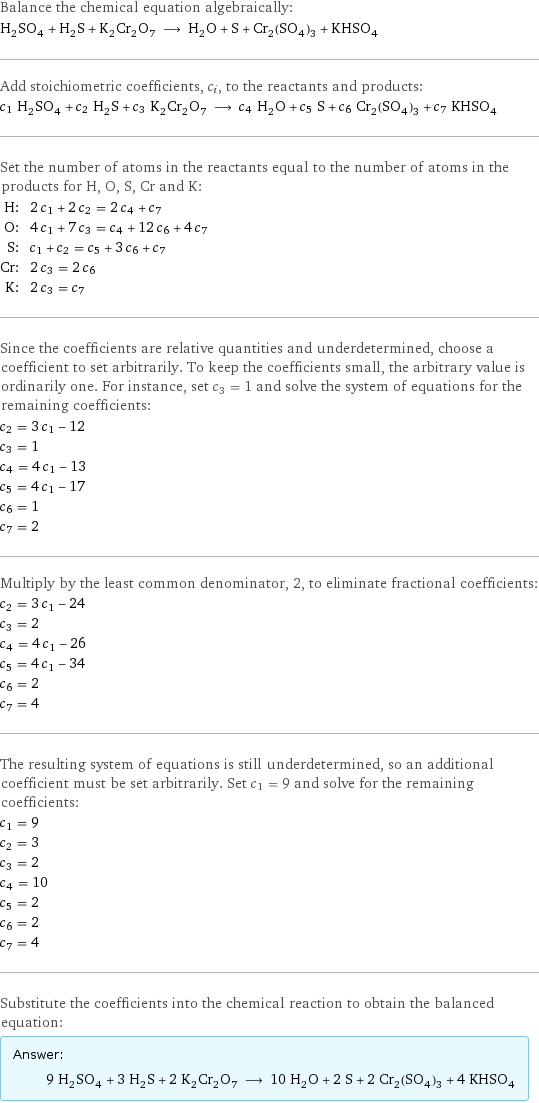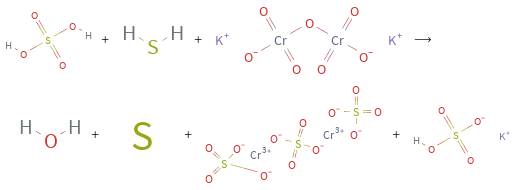Input interpretation

H_2SO_4 sulfuric acid + H_2S hydrogen sulfide + K_2Cr_2O_7 potassium dichromate ⟶ H_2O water + S mixed sulfur + Cr_2(SO_4)_3 chromium sulfate + KHSO_4 potassium bisulfate
Balanced equation

Balance the chemical equation algebraically: H_2SO_4 + H_2S + K_2Cr_2O_7 ⟶ H_2O + S + Cr_2(SO_4)_3 + KHSO_4 Add stoichiometric coefficients, c_i, to the reactants and products: c_1 H_2SO_4 + c_2 H_2S + c_3 K_2Cr_2O_7 ⟶ c_4 H_2O + c_5 S + c_6 Cr_2(SO_4)_3 + c_7 KHSO_4 Set the number of atoms in the reactants equal to the number of atoms in the products for H, O, S, Cr and K: H: | 2 c_1 + 2 c_2 = 2 c_4 + c_7 O: | 4 c_1 + 7 c_3 = c_4 + 12 c_6 + 4 c_7 S: | c_1 + c_2 = c_5 + 3 c_6 + c_7 Cr: | 2 c_3 = 2 c_6 K: | 2 c_3 = c_7 Since the coefficients are relative quantities and underdetermined, choose a coefficient to set arbitrarily. To keep the coefficients small, the arbitrary value is ordinarily one. For instance, set c_3 = 1 and solve the system of equations for the remaining coefficients: c_2 = 3 c_1 - 12 c_3 = 1 c_4 = 4 c_1 - 13 c_5 = 4 c_1 - 17 c_6 = 1 c_7 = 2 Multiply by the least common denominator, 2, to eliminate fractional coefficients: c_2 = 3 c_1 - 24 c_3 = 2 c_4 = 4 c_1 - 26 c_5 = 4 c_1 - 34 c_6 = 2 c_7 = 4 The resulting system of equations is still underdetermined, so an additional coefficient must be set arbitrarily. Set c_1 = 9 and solve for the remaining coefficients: c_1 = 9 c_2 = 3 c_3 = 2 c_4 = 10 c_5 = 2 c_6 = 2 c_7 = 4 Substitute the coefficients into the chemical reaction to obtain the balanced equation: Answer: | | 9 H_2SO_4 + 3 H_2S + 2 K_2Cr_2O_7 ⟶ 10 H_2O + 2 S + 2 Cr_2(SO_4)_3 + 4 KHSO_4
Structures

+ + ⟶ + + +
Names

sulfuric acid + hydrogen sulfide + potassium dichromate ⟶ water + mixed sulfur + chromium sulfate + potassium bisulfate